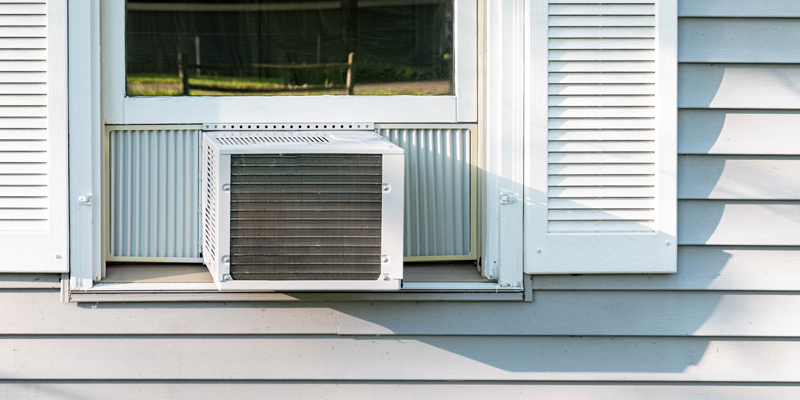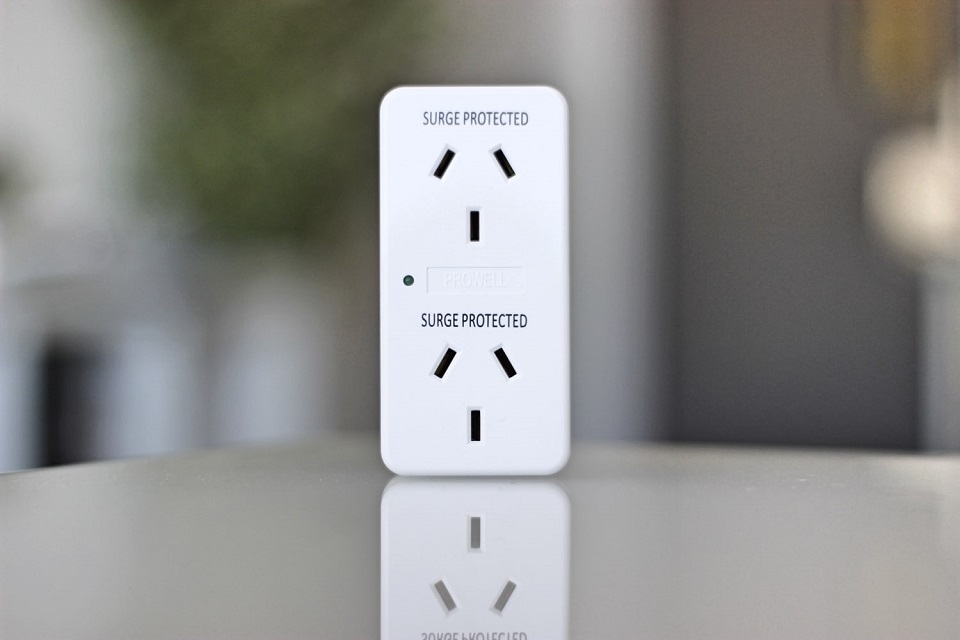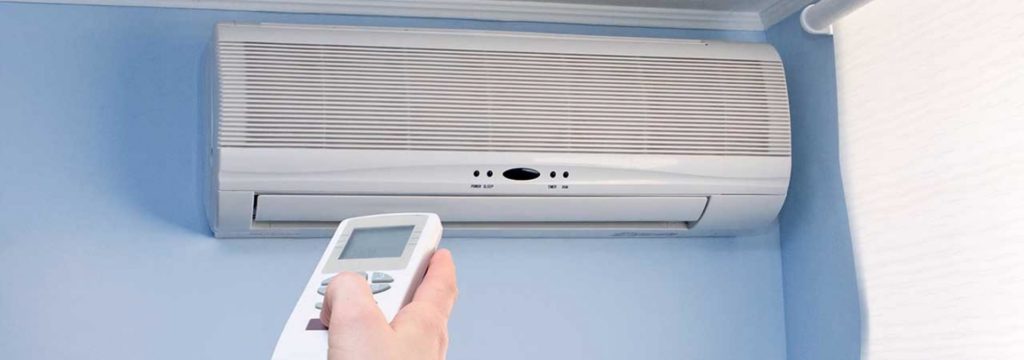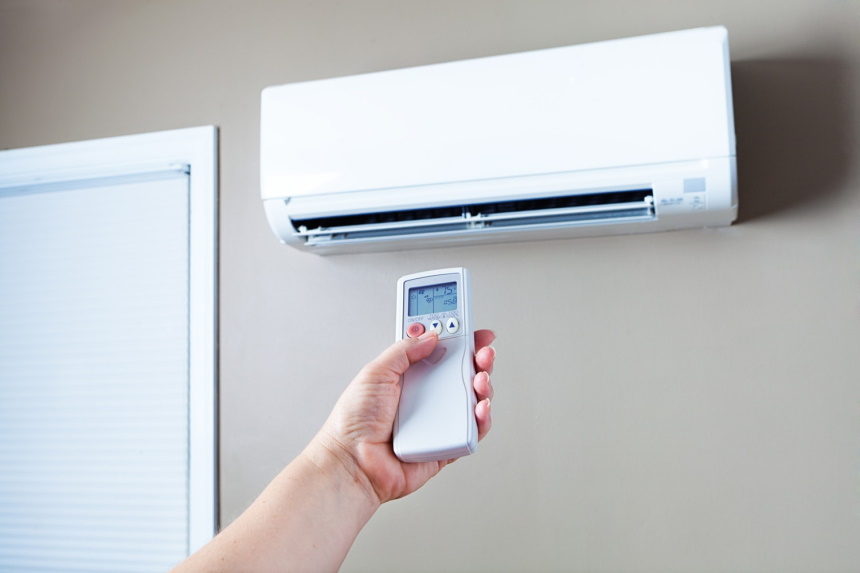

Are you confused by all of the options for HVAC pumps? Wondering exactly what they do, and how you can choose a high-quality vacuum pump for HVAC systems in your home? What do HVAC pumps do for your system and why are they essential for doing any sort of maintenance? We’ve done the research for you, with a huge number of reviews of the best vacuum pump for HVAC options.
We’ve reviewed products based on the key features and functions. CFM (how much air it is able to move), the vacuum level measured in microns, oil capacity, stages (is it a one stage or two stage HVAC pump) and the weight and dimensions of the vacuum pump. The oil capacity, for example, will impact upon how long the pump can safely run for. All of these features play a big part in providing a quality vacuum pump. But more detailed information you will see in our product reviews and in the complete buying guide.
Other features: Multicolored set of three 36” hoses, manifold gauge, vacuum pump oil bottle, accessories and storage bag included, ideal use for R12, R22, R134a and R410a
The XtremepowerUS is a very powerful pump which comes with its own case and loads of accessories to enable you to store everything conveniently together. It features a ¼ Horse Power design and 3 CFM, 1-stage pump. It has a lot of efficiency and very low noise output, it also has a cooling fan so if you need to use it for a long time it shouldn’t overheat.
The aluminum alloy case means that it is both light, but also hard-wearing, and the safety caps are made of brass to stop oil from leaking out. It comes with a HVAC gauge which can link to a HVAC system and tell you the problem.
It’s easy to change the oil, with a clean pour and drain plug so you can fill the reservoir when you need to.
All of the accessories you are likely to need for the process are included, as well as 3 x 36 inch hoses, a manifold gauge, and a bottle to store the oil within.
For a relatively lightweight and convenient product this still offers plenty of power and it is ideal for use with R12, R22, R134a and R410a systems.
Other features: 1-year warranty, built-in high volume cooling fan, 1/4 inch flare female x 1/2 inch Acme male
The Kozyvacu TA350 Single-Stage Rotary Vane Vacuum Pump is next on our list and makes the list due to the fact that it is incredibly good value. It has a 150 micron vacuum level and CFM of 3.5.
The TA350 is pretty lightweight, but it is still pretty durable as it has a cast aluminum construction. A vacuum pump doesn’t have to be really heavy to be durable.
The direct drive motor is not just quick and easy to start, it doesn’t need any maintenance, and even the oil is easy, as there is a viewing window so you can see how much is left, and if the oil is still in good condition. The oil fill port is really easy to add.
There is a fan inbuilt, this is designed to cool the pump even if it is being used for long periods of time, so it shouldn’t overheat. This pump has a ¼ horse power of power in total, which is plenty for most people’s needs.
Naturally, one of the very best things about this is the price, but this isn’t just a cheap option, it still has plenty of quality to offer and it is good for those who need to do some HVAC maintenance from time to time.
To protect the purchase, this comes with a one year warranty in case anything goes wrong with your pump.
Other features: 1-4 HP, built-in thermal protection, shock-proof and wear resistant base, oil window, aluminum housing, bottle of vacuum oil included
The ZENY 3.5CFM Single-Stage 5 Pa Rotary Vane Economy Vacuum Pump is another small and relatively affordable vacuum pump for HVAC. It has many of the same features as some of the other best ac vacuum pump options, but manages to keep the cost very reasonable, so it doesn’t cost too much money at all.
It has a visual fuel tank so you can constantly monitor the oil, check there is no shortage and prevent any sort of burnout of the motor.
It’s a fast-start machine and keeps a stable output. There are also some very clever features, when something gets stuck inside the radiator, it can automatically protect itself from burn-out. There is an automatic cut-off if there is power failure.
The oil drain plug at the bottom of the oil reservoir is a good way to drain the oil when you need to.
The direct drive motor makes it easy to start, and the design of the motor is also maintenance free, so you don’t have to constantly be performing annoying maintenance.
This is relatively lightweight, and a good option for durability too, as the aluminum casing (similar to the other options on this list) is sturdy in spite of being cheaper than most of the choices on the list.
Other features: 1-year warranty, built-in high volume cooling fan, 1/4 inch flare female x 1/2 inch Acme male
The FJC 6912 Vacuum Pump 5.0 Cfm is a heavy duty model, which has a ⅓ horse power engine, making it a bit more powerful than some of the other models on the list. It has a 75 micron vacuum level, and connections include a ¼ inch flare female and ⅓ inch acme male, so you can connect to your own specific system with ease.
The oil capacity is 12 oz and it is easy to see how much oil is in the system. A CFM rating of 5 makes it better for the slightly bigger systems that demand a vacuum pump for hvac that can do a thorough and powerful job.
As most of the other vacuum pumps on this list do, this has a very good cooling fan within, to avoid overheating. Some older models of vacuum pumps suffered from issues around overheating which could cause the pump to break altogether.
It removes moisture and non condensable items from HVAC systems with ease.
One of the things that a lot of people report about this well-designed model is the fact that it is very quiet compared to a lot of the other pumps. If you want a model that isn’t annoying and loud while you clear out your system, this could be a good choice. However, it does come at a bit of a higher cost.
Other features: 1/2″ ACME and 1/4″ MFL intake fitting
The Robinair (15500) VacuMaster Economy Vacuum Pump is a 5 CFM model which is a good balance between cost and quality. It’s a hard-wearing pump, but also weighs a fair amount more than some of the other options. This is a 35 micron vacuum.
The Robinair pump can be used for air conditioners and fridges, and there’s a 2-stage rotary design to the motor. It has a 7.5 oz oil capacity.
This vacuum pump has ⅓ horsepower and this provides 5 CFM. The motor is “thermally protected” so it won’t get too hot, and cause any damage.
There is an inlet that has been designed to provide the maximum possible airflow but also prevent any oil backflow. It’s also made out of fitted aluminum so the heat can cool off a lot quicker.
In terms of connectivity, it has both 1/4 inch MFL & 3/8 inch ACME inlet fittings, 3/8 inch FFL x 1/2 inch Acme adapter. There’s also an angled oil drain valve making it easy to drain any oil when you need to replace this.
If you don’t mind the fact that it weighs more, then this could be the vacuum pump for you. It does a good job of staying cool and the build quality is clear to see.
Other features: 1 bottle of oil, 1 leak detector, carry bag and gauge set included
The VIVOHOME model makes it to the list for a few different reasons. First and foremost, it is a great option for anyone who needs a full set. This HVAC pump comes with a load of different accessories including some that none of the other pumps on the list offer. Things like a leak detector, which can be a fantastic piece of kit for your HVAC system.
On top of this, it comes with a gauge set for checking pressures, a bottle of oil and a convenient bag/case to carry everything in.
As well as being reliable and daily well-made, it has a convenient carry handle that means it is even more portable than some of the other options. All in all, it weighs quite a lot, but this is partially due to all of those accessories. It isn’t overly large and can be stored away in the garage ready for the next time you need to perform some HVAC maintenance.
Oil changes are easy and you can see into the reservoir so you know exactly how much oil remains within the pump. It’s not the cheapest vacuum pump, but considering all those accessories it is fairly good value.
Other features: US manufactured, 4 inline ports, Run Quick oil change system
The Fieldpiece Vp85 is the best option for those who are looking for a vacuum pump made in the USA. The Fieldpiece doesn’t only work easily and conveniently with US devices, it is exceptionally well made.
It is definitely worth noting that this has a couple of very distinct features compared to a lot of the options on this list. It weighs 28 lbs, which makes it the heaviest of the vacuum pumps on the list. It’s designed largely for professional use, so it can certainly do a great job, but it could be overkill for some of our needs, especially if we just need to perform occasional maintenance.
This is a two stage system, and has a 15 micron vacuum level. It’s designed to be simple to store, and though it doesn’t come with a lot of different accessories it has a simple handle to tie the cord to.
A Run Quick oil change system makes it really easy to change the oil, and the brand even claims you can do it in under 20 seconds. There are four in-line ports.
If you don’t mind spending a bit more money to get a very reliable pump, or if you need to constantly service a lot of different HVACs, this could be a very good option for you.
A lot of people looking to buy the best vacuum pump for their HVAC or air conditioning system may never have experienced buying something like this before. It’s a pretty unusual purchase. If you are one of the people who hasn’t had to buy one of these HVAC pumps before then our buying guide is designed to simplify things and make it easy for you to understand roughly what you should look for, how much you should spend and many of the most important things about vacuum pumps for HVAC systems.
We know this isn’t an everyday purchase, and the model that is best for one person may not be the very best for someone else, so it’s key that you read through our guide before taking the plunge and making a purchase. Don’t worry about the abbreviations and confusing terminology, we’ve demystified it within this post to try and make it simple for beginners.
Before we make a purchase, we need to understand what a vacuum pump is, what it does and whether or not it is the right piece of kit for what we need. You might have noticed when looking at the products we’ve reviewed that there are many different options and that some can even be used as pumps in different household and mechanical scenarios.
Basically, an AC vacuum pump is something that can “suck out” the unwanted air and any water vapor in the system, ready for it to be serviced. When the AC unit needs to be repaired, the first step involves removing this vapor and recovering the refrigerant from the system to use later.
You will have to take other steps such as ensuring that the whole system doesn’t have any leaks. This is made easy by some of the vacuum pumps on our list which actually include leak detectors so that you can do this part of the job.
The evacuation is the most important step, getting everything out of the refrigerant system ready to charge it and test the system without any vapors getting in the way.
The following are the key features to think about when you are buying a vacuum pump for HVAC. We’re trying to make it as simple as possible, even for people who have never used a pump before, or serviced a HVAC, but are looking to do so for the first time. What do these
What materials are used to make the vacuum pump? Is it a high-quality pump and is the workmanship clear to see when you use it. A lot of these pumps choose to use aluminum for the casing. Aluminum does a very good job of being relatively sturdy, but also managing not to be too heavy. This means that it is a favorable material. On top of this, it is also good for allowing the heat to dissipate pretty quickly.
It is normally the case that the cheaper you are willing to go when making your purchase, the lower the quality of the materials will be. However, if you only use your vacuum pump occasionally then this might not be too much of an issue. The Fieldpiece Vp85 is a good example of a vacuum pump with plenty of quality materials used in the construction.
The CFM refers to how quickly the pump can clear the system and create a vacuum. CFM stands for cubic feet per minute, and though the maths to work it out precisely is complicated, it is simplified so that you can simply measure the numbers against one another. Higher CFMs means it will clear out larger systems a lot more quickly.
For a home system, anything between 3 and 6 CFM should be fine, but you might want to go a bit higher if you are using it in a commercial setting. All of the pumps on the list will eventually clear out the system eventually, but a higher CFM just makes things a lot quicker.
This is another complicated measurement that can be simplified to allow you to compare one model from another.
When creating a vacuum within the system, you will be looking for a low rating for the vacuum level. Microns are used to measure this. So if you did want a perfect, flawless vacuum then you would need zero microns within the system.
The Robinair (15500) has a micron level of just 35, and produces some very professional results.
This is another piece of terminology to get to grips with when you are trying to understand how HVAC pumps work.
A single-stage model is either on or off, whereas a two-stage model can operate at different levels. The stages can relate to the maintenance costs, and single-stage models tend to be more basic in their design.
The Robinair (15500) is one of the most affordable ways that you can get a two-stage model of vacuum pump for a HVAC. It’s great if you can get two stages but if not then it isn’t too much of a big deal.
Vacuum pumps will require some oil inside the system in order to run, and this measurement of how much oil can be kept within is really simple. More oil often means less frequently needing to change it, of course.
A lot of the models out there feature windows. For example, with the ZENY, you can constantly see how much oil is remaining and the quality of the oil, so when it might need to be changed.
10-12 Oz is a pretty standard. The VIVOHOME, for example, has just under 12 Oz capacity.
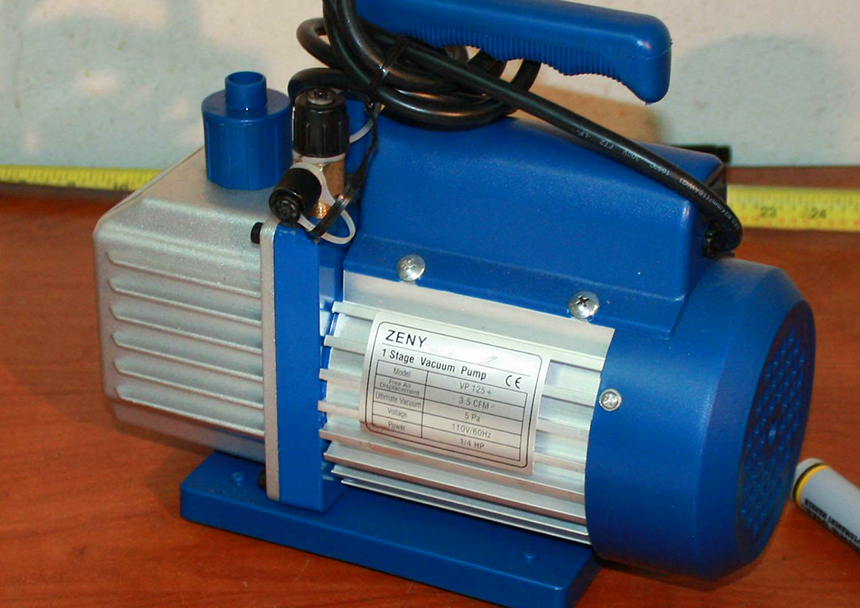
Most of the vacuum pumps we’ve mentioned and reviewed do come with a one year warranty so you have at least some protection when you make your purchase.
The dimensions and the weight of the pump aren’t the number one priority, but there is really no need to have a huge, heavy product unless you are looking for a commercial-grade, professional vacuum pump. A lot of the products on the list weigh around 10 lbs, but if you want to go for a bit more rugged quality and a USA design, you might want an option like the Fieldpiece Vp85 with a 28 lbs design. This isn’t ideal for everyone and storing it within your home would not be the easiest thing to do.
Your vacuum pump shouldn’t be difficult to install and get set up ready to take the air out of the system and create a full vacuum. It is ideal if it is easy to set up, and for beginners, and people who are not HVAC professionals this can be pretty tough. Some of the models that come as sets feature color coded hoses and other simple examples of ways the installation can be made easier. The VIVOHOME has been named as the best set, and there is good reason for this, the easy installation is made simpler by having everything you need ready to go within the package if you buy this vacuum pump.
What sort of safety features should you be on the lookout for when you are trying to find a vacuum pump for HVAC. If you haven’t used these sorts of pumps before and you aren’t used to performing your own maintenance then it is even more important you don’t give any sort of a hazard by buying the wrong pump.
A lot of the safety features relate to overheating. Historically, some vacuum pumps that were not very well-made could cause an overheating risk, this could mean that it broke, or even worse, it could cause a hazard around the home or cause a fire risk. Many of the models have incorporated cooling systems to prevent this from happening, including our overall editor’s choice, the XtremepowerUS, a fantastic model for a variety of reasons but not least of all the safety that comes inbuilt.
Obviously, durability is a big deal with these sorts of products. You don’t want something that will simply break after one or two uses. The materials used play a huge part in this. A good example of safety features includes the Robinair (15500) which has anti-slip feet, meaning that the pump stays safely in the same place throughout the usage.
How easy is the product to use? It is worth considering how quickly and easily it can start to remove the vapor and other unwanted materials from the HVAC system before performing maintenance.
The best vacuum pumps come with clear instructions to help you to work out exactly how they are controlled.
Of course, it is definitely worth mentioning that all of these products do require a level of knowledge and expertise, anyone who is not quite sure what they are doing should avoid taking any risks by starting to perform maintenance on their HVAC system without being fully aware of the risks involved and what they are doing. You can always call a professional in for help if you need to.
A lot of the extra features included come in the form of safety features such as the safety feet to keep a product in place, or the huge amount of accessories some of the vacuum pumps come with. The VIVOHOME is a great example of this. While it is not quite the best model on the list in terms of durability and build-quality, it has a lot of extra features and accessories including 1 bottle of oil, 1 leak detector, carry bag and gauge set included.
If you are thinking about how you can choose based on the actual size then the connections and compatibility are the most important factors. Consider whether your HVAC will work with the pump as there is no point in buying it if it doesn’t fit or have the right inputs and outputs.
Ultimately, while it is not “essential” it is definitely worth considering as a feature, and most of the best modern Vacuum Pumps out there do come with this as a way to monitor the oil levels within your pump.
Our research has led to us recommending some very high-quality vacuum pumps. The XtremepowerUS is our editor’s choice, not only is it really well made, but it has loads of accessories included and works with a wide variety of different HVAC systems. It’s lightweight and comes with oil. There is even a carrying case for you to take the pump and all of these accessories out and about with you. The XtremepowerUS deserves its high rating of 9.9/10.
The Kozyvacu TA350 is next on our list, in spite of having a bit less power at only 3.5 CFM, it is still one of the best vacuum pump for HVAC options, and we’ve named it as the best value, as you will struggle to find this build-quality elsewhere without spending a lot more money. We’ve rated this at 9.8/10 overall.
The ZENY is our budget pick, and you can really struggle to find this level of functionality and build-quality in a more expensive option. It doesn’t have accessories, but it is still very high quality and comes with a rating of 9.7/10, it is amazing what you can get for under $100.
